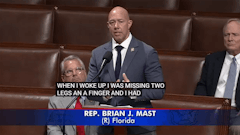
Endocanna Health began setting up its science board earlier this year to connect its genetics technology with emerging research on how different cannabis chemovars interact with the endocannabinoid system. The goal is to meet the needs of cannabis patients and consumers alike with peer-reviewed research, the very vanguard of our understanding of this plant.
With genomic testing similar to genealogy companies like 23andMe, Endocanna can link a person’s endocannabinoid system with particular chemovar profiles that will provide him or her with desired effects (sleep aid, hunger, pain relief, etc.). Dr. Ethan Russo, author of “The Case for the Entourage Effect and Conventional Breeding of Cannabis,” published in Frontiers in Plant Science, has joined Endocanna Health’s science board to help advance this testing. The board’s goal is to help bring complicated scientific concepts to the broader marketplace.
“We hear a lot these days in society about individualized medicine,” Russo says. “That would be the idea that we can’t always use one-size-fits-all approaches. That is particularly true in relation to the endocannabinoid system.”
Short of expensive, invasive scans that would determine a person’s “endocannabinoid tone” (the state and health of their endocannabinoid system), a patient or customer can learn more about chemovar efficacy by pairing his or her own genomic data against different cannabis chemical profiles.
As the industry learns more and more about the endocannabinoid system, Russo says it seems clear that individualized treatments will become more common.
“Given that the endocannabinoid system is important in every aspect of physiology it’s very easy to understand how it would similarly be a factor in many different disease processes,” Russo says. “That is a partial explanation as to why cannabis is suddenly used to advantage in so many different conditions.
“It’s apparent that different people need different things. Particularly with cannabis-based medicine, we can’t guess in advance what someone’s dose is. It is established hopefully slowly through trial and error to find out the lowest dose that helps a person without producing side effects. Knowing more about the state of the endocannabinoid system through genomic testing … will tell us a lot about a given person’s susceptibilities—whether they, for example, have a defect in the enzymes that break down anandamide, one of the endocannabinoids. This would be a major factor in the kind of dosing that they would need—or exactly what they might need.”
Endocanna CEO Len May tells Cannabis Business Times that the science board harkens back to his own personal history with the plant. May was diagnosed with ADD, which led him to use cannabis in treating his symptoms and getting off prescription medication. As he grew into a cannabis reform advocate, he says he kept seeing patients using the same chemovars and expecting different, more nuanced effects.
May worked with Medicinal Genomics and began to learn more about the genomic makeup of the plant, helping to develop the company’s Cannapedia (an encyclopedic listing of cannabis cultivars).
As he gathered information on how a particular chemovar profile would interact with genes relating to Dravet syndrome, for example, he decided to hone his career toward the human side of this emergent genomic research and peer-reviewed citations. In an interview with CBT, May pointed to Charlotte Figi’s Dravet syndrome diagnosis, her cannabis treatments and her untimely death just last week as a recent source of inspiration for the entire industry.
As he learned more about the intimate work of the endocannabinoid system, he saw more work on the horizon.
“This is an opportunity,” he recalls. “If there’s one marker, one biomarker, one SNP, one gene [that triggers Dravet syndrome], perhaps there’s more [that trigger other responses].” Because the endocannabinoid system modulates the other systems in the human body, there are many ways to use phytocannabinoids in cannabis to influence that physiology—for better and worse.
He compares the problem to longtime medical cannabis patients who suddenly use a concentrate product and find themselves dealing with a bout of paranoia. May says this is a triggered genetic expression, a dormant predisposition that their endocannabinoid system brought about once this new type of cannabis was consumed. The issue is compounded when that patient then grows wary of cannabis in general.
The way the Endocanna DNA tests work is this: The company uses an individual’s genotype information to find predispositions (toward alcohol abuse, insomnia, epilepsy, depression and so on). The Endocanna team then develops a set of cannabinoid and terpene profiles that will target those predispositions and alleviate any pain or frustration.
If one type of cannabis isn’t working for someone, May asserts that genotype information will point the way toward another type that does.
Russo concurs. “The kind of information that Endocanna DNA produces includes variations that a person might have in components of their endocannabinoid system. But there’s a second part, in that there would be information available about particular kinds of cannabis that this individual might either prefer or should avoid.”

























